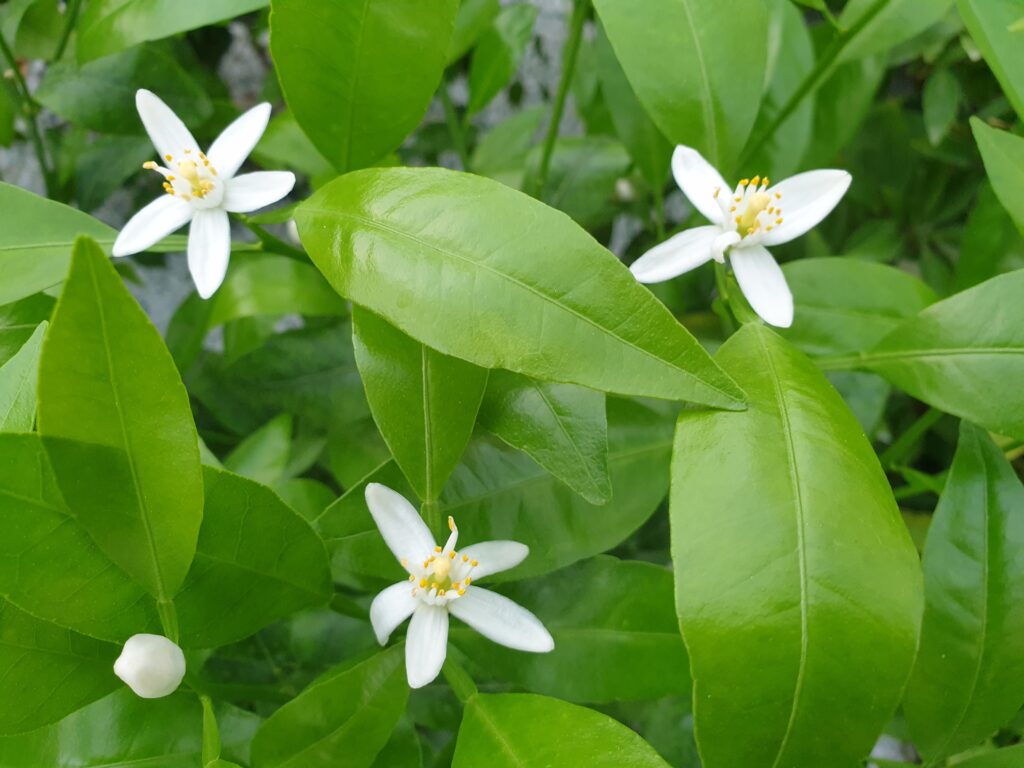Ponkan is probably the most widely grown mandarin in the world, it is widely grown in southern China and Formosa and is known as Batangas from the Philippines and Nagpur Suntara or Santra from India. It is also grown widely in Africa and Brazil. It is sometimes referred to as Chinese Honey orange. It is vigorous and has an upright growth habit. At maturity it is a medium-sized tree with a strong tendency to alternate fruiting. It is reported to be less cold tolerant than most mandarins and is more likely to thrive in tropical climates.
Annual production in China was 4 million tonnes in 2010. Most of the fruit is harvested while still green before frost and then allowed to ripen under controlled conditions (Zhou, 2010). To improve fruit quality, greenhouses are widely used in Ponkan production, which can maintain a reasonable temperature and provide a relatively stable environment for the development of Ponkan fruit in the later stages of ripening. This approach significantly reduces fruit acidity (Zhang, 2013).
The fruit is large (for a tangerine), spherical to slightly obovate. The skin is medium thick, relatively loose-fitting; orange in colour at maturity. The segments are about 10 in number and are easily separable. The colour of the flesh is deep orange; it is crisp and melting, juicy; the taste is mild and pleasant, aromatic. Seeds are few. If the fruit is not harvested at maturity, it loses quality and the skin swells (Reuther, 1967). Because of its quality, the fruit is usually intended for direct consumption or used fresh in cold dishes such as salads.
Tanaka (1927) believed that this mandarin originated in India and, due to its uniqueness, soon spread throughout the Orient. This view was supported by the fact that for centuries it had been cultivated as a seedling in orchards in very remote parts of India – particularly in the Coorg district in the south and in Assam and neighbouring Nepal and Sikkim in the north-eastern part of the country. The fruit reached Europe as early as 1805.
Genetically, Ponkan is derived from a group of wild mandarins from the area north of the Nanling Mountains in China, such as C. reticulata ‘Changsha’ and C. daoxianensis ‘Daoxian Wild’. Phenotypically, this group was characterized by orange-red fruit color, strong aroma and mild acidity (Wang, 2018). Genetic variation in the area has gradually increased, with crosses between the native wild mandarin C. reticulata and another wild species, Manshanyeju (Wu, 2021). By about 80,000 years ago, this genetic variation may already be related to human activities in Dao County, an ancient site of wild mandarin domestication. This has subsequently also brought about crossbreeding with C. maxima, which accounts for 4.67% of the genetic code of Ponkan (Wang, 2018). Therefore, Ponkan is not a hybrid between mandarin and pomelo, as claimed until recently, but has undergone multiple re-crossings, mainly among wild mandarins in the area north of the Nanling Mountains.
The variety has also been used in breeding programmes to develop other citrus varieties, including the Dekopon cultivar, although it is not itself very prone to producing hybrids. The worldwide population of Ponkan is fairly uniform across continents with no significant cultivars or variations (Colleta-Filho, 2000).


